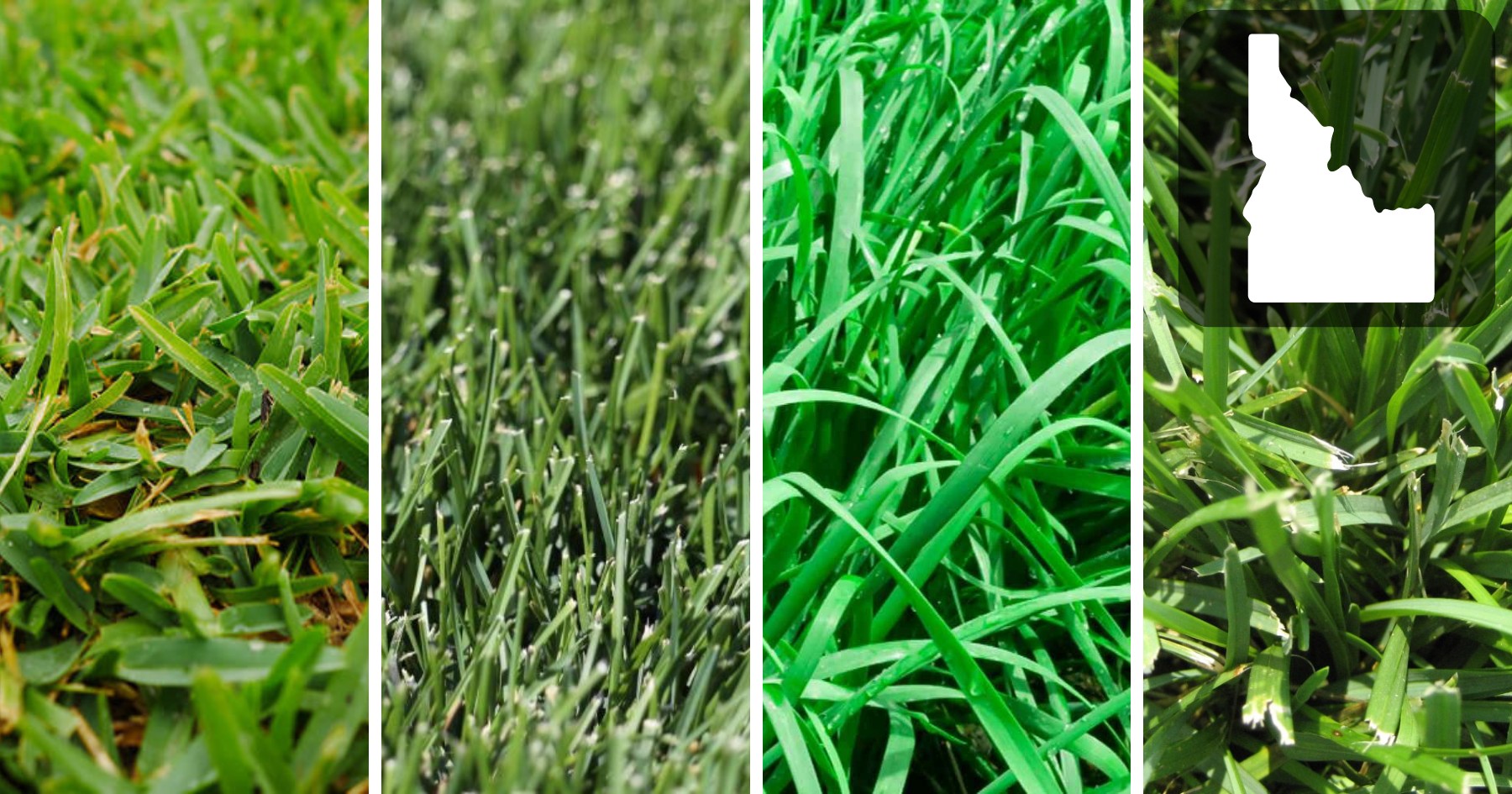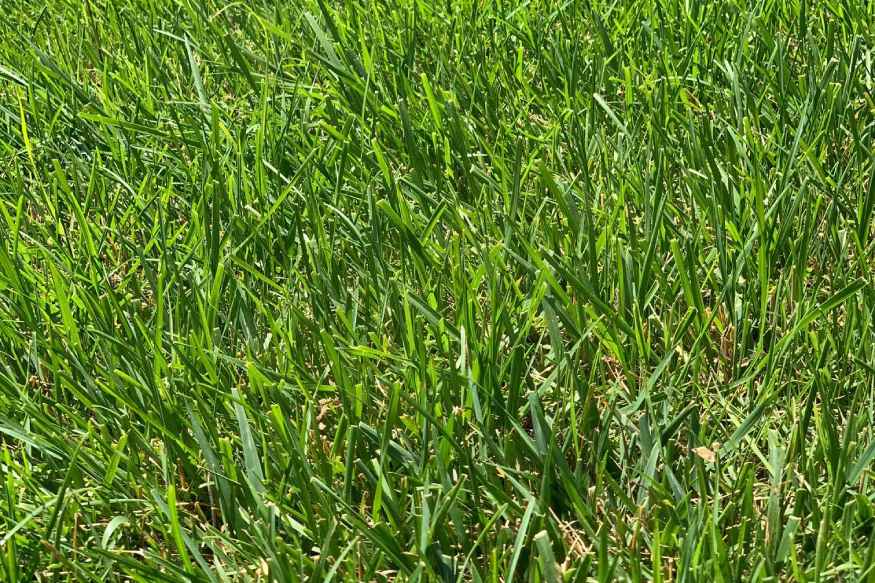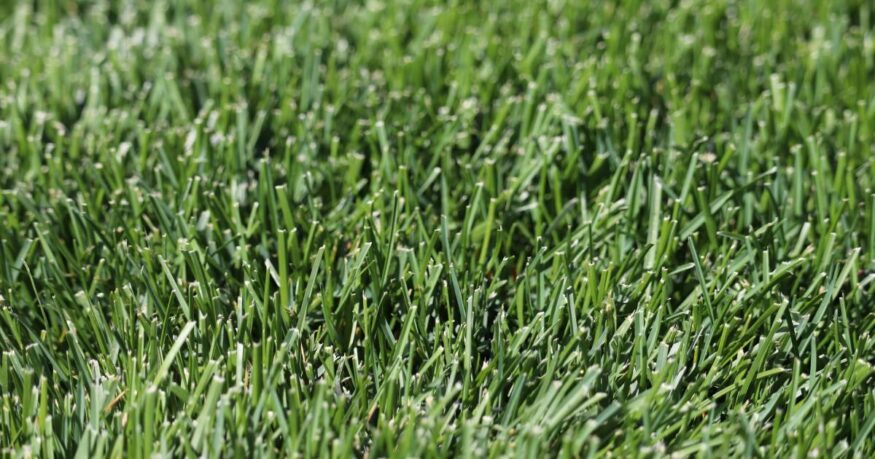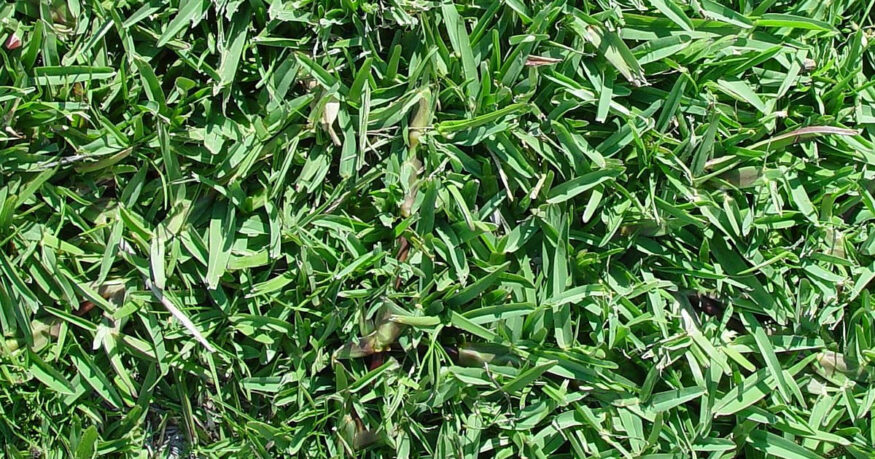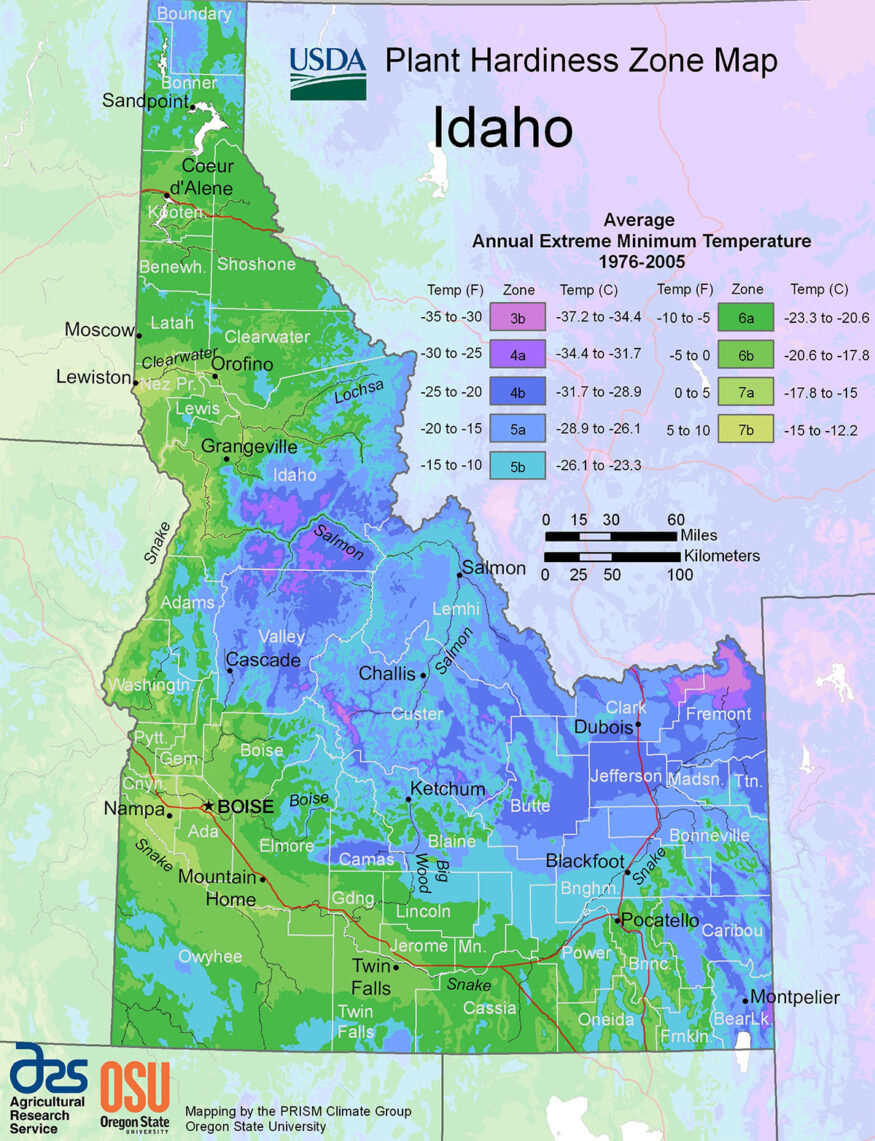Are you looking to spruce up your Idaho lawn with the perfect grass seed? Well, you’re in the right place! In a nutshell, Tall Fescue is an excellent option for Idaho lawns. But don’t just take my word for it – stick around for all the juicy details and other top contenders for your yard.
Growing a lawn in Idaho can be quite the challenge, with factors like temperature fluctuations and varying soil conditions to consider. But fear not, my fellow lawn enthusiasts – we’ve got you covered with the best Idaho grass seeds, tips, and tricks to help you achieve that lush, green turf you’ve always dreamed of. Let’s dive in!
[ez-toc]
Tall fescue
| Also Known As | Lolium arundinaceum (formerly Festuca arundinacea) |
| Type of Grass | Cool season perennial |
| Optimal Zones | Northern through transition zones |
| Root Structure | Deep |
| Winter Hardiness | Excellent |
| Shade Tolerance | High |
| Water Requirements | Medium to High |
| Drought Tolerance | Excellent |
| Self Repair Capacity | Limited |
| Overall Maintenance Requirements | Low |
Why Tall fescue is The Most Popular Choice
If you’re looking to achieve the perfect lawn in Idaho, one of the top grass choices you should consider is Tall Fescue. This hardy grass is known for its quick growth and ability to tolerate heat well, making it an excellent fit for Idaho’s climate. Additionally, Tall Fescue requires fewer inputs than other cool-season grasses, meaning it’s both an efficient and environmentally friendly option for your lawn.
Tall Fescue’s deep root system sets it apart from other grass types, as it allows the grass to be more heat tolerant and drought-resistant. It’s also adaptable to a variety of soil conditions and has low to moderate fertility requirements. So, whether you live in Boise or any other part of Idaho, Tall Fescue is likely to thrive in your yard.
Homeowners will appreciate Tall Fescue’s toughness, as it can withstand heavy traffic and frequent use. It’s no wonder this grass is often found on football fields and parks. However, it’s essential to provide Tall Fescue with regular watering and fertilizing to maintain its health and appearance. Watering deeply once or twice a week during the growing season and applying a balanced fertilizer every four to six weeks will keep your lawn looking great.
When it comes to mowing, Tall Fescue should be cut regularly to maintain a height of two to three inches. This practice helps prevent weed growth and promotes a thick, even lawn.
Keep in mind, though, that Tall Fescue may not perform as well in shady areas or poorly drained soils. It might also require more maintenance than other grasses, such as bluegrass or ryegrass. However, considering its heat and drought tolerance, quick growth, and adaptability to various soil conditions, Tall Fescue remains an excellent choice for Idaho homeowners looking to achieve a beautiful and resilient lawn.
Looking for the best grass seed for your region?
Our smart lawn plans are designed to work perfectly with your local soil and climate conditions, without any of the toxic stuff.
Use the code EHG20 for an instant $20 discount!
- Personalized lawn care: Custom lawn plans based on soil analysis, climate data, and your specific lawn needs.
- Convenience with a conscience: Products that are not only easy to use but also safe for you, your pets, and the planet.
- Science-backed formulas: Bio-based formulas contain effective, natural ingredients like seaweed, molasses, and iron.
- Expert support: Get one-on-one guidance from a real person and rest easy with Sunday's satisfaction guarantee.
Kentucky Bluegrass
| Also Known As | Poa pratensis L. |
| Type of Grass | Cool season perennial |
| Optimal Zones | Northern cool season zone, transition zones |
| Root Structure | Shallow |
| Winter Hardiness | Excellent |
| Shade Tolerance | Poor to Good |
| Water Requirements | High |
| Drought Tolerance | Poor |
| Self Repair Capacity | Excellent |
| Overall Maintenance Requirements | High |
What Makes Kentucky Bluegrass A Great Grass For Idaho
This cool-season grass is known for its beautiful dark green color, good drought tolerance, and ability to form a durable sod. It’s a popular choice among Idaho homeowners because it can create some of the highest quality lawns when maintained properly.
One of the reasons why Kentucky Bluegrass is such a fantastic option for Idaho lawns is its ability to repair itself from damage. Thanks to its spreading nature through rhizomes, this grass can quickly bounce back and keep your lawn looking lush and healthy. If you want to add some diversity and resilience to your lawn, consider mixing Kentucky Bluegrass with Perennial Ryegrass for an even stronger turf.
Now, let’s talk about some of the care tips for Kentucky Bluegrass to ensure your Idaho lawn stays in top shape. The best time to sow the seeds is during late summer or early fall when soil temperatures are between 50°F and 65°F. You’ll want to use about 2 to 3 pounds of seeds per 1000 square feet for optimal coverage. When it comes to watering, start by watering lightly and frequently until the seeds germinate. After that, you can reduce the frequency and increase the depth of watering.
To keep your Kentucky Bluegrass lawn looking its best, mow the grass at a height of 2 to 3 inches and leave the clippings on the lawn to provide additional nutrients. Fertilize your lawn four times a year with a balanced fertilizer, preferably in spring, early summer, late summer, and fall. Don’t forget to aerate the soil every year to improve drainage and reduce compaction.
It’s important to note that Kentucky Bluegrass does have some downsides, such as being slow to germinate and requiring higher inputs like water, fertilizer, and mowing compared to other grasses. Additionally, it may be susceptible to insect and disease problems in Southern Idaho. However, if you’re willing to put in the effort and follow the proper care instructions, Kentucky Bluegrass can truly be the best choice for your Idaho lawn.
Buffalo Grass
| Also Known As | Buffalograss; Buchloe dactyloides |
| Type of Grass | Warm season perennial |
| Optimal Zones | Northern, transition, and southern zones |
| Root Structure | Very deep |
| Winter Hardiness | Great |
| Heat Tolerance | Great |
| Shade Tolerance | Poor |
| Water Requirements | Low |
| Drought Tolerance | Excellent |
| Self Repair Capacity | Moderate to high |
| Overall Maintenance Requirements | Low after establishment |
Why Buffalo Grass Grows well in Idaho
One of the top reasons to consider buffalograss is its extreme drought tolerance and slow growth rate. This means you’ll need less irrigation and maintenance, making it perfect for Idaho’s arid climate. Plus, it’s well adapted to a wide range of soils, especially those with alkaline conditions and low fertility. But wait, there’s more!
Buffalograss is resistant to heat and disease, and it creates a dense, durable turf that can withstand moderate traffic. Its fine texture and light green color blend well with other grasses or native plants, giving you a stunning, low-maintenance lawn. However, keep in mind that buffalograss is best suited for areas with a warm and dry climate, as it won’t survive harsh winters or heavy rainfall.
To give your buffalograss the best start:
- sow the seeds in late spring or early summer when the soil temperature is above 60°F
- Use a rate of 2 to 3 pounds of seed per 1000 square feet of lawn area, and rake the soil lightly to cover the seeds with about 1/8 inch of soil
- Water the seeds daily until they germinate, then reduce watering to once a week or less, depending on the weather conditions.
As for mowing and fertilizing, it’s quite simple. Mow your lawn when it reaches 3 to 4 inches in height, using a sharp mower blade. Cut no more than one-third of the grass height at a time, and leave the clippings on the lawn as mulch or compost. Fertilize your lawn with a low-nitrogen fertilizer once or twice a year, preferably in spring and fall, following the label instructions for application rate and method. Just avoid over-fertilizing or fertilizing during hot or dry periods.
In conclusion, buffalograss is an excellent choice for Idaho lawns because of its drought tolerance, low maintenance, and adaptability to various soil types. Just keep in mind that it may take longer to establish compared to other grass types and may need overseeding to fill in bare spots. Happy planting, Idaho!
Idaho’s Climate And Growing Challenges For Lawns
Idaho’s Diverse Climate
Grass seed selection for Idaho lawns can be confusing due to the state’s diverse climate, which ranges from semi-arid to continental. This variation depends on the region and elevation, and results in four distinct seasons with hot, dry summers and cold, snowy winters.
Idaho’s growing season is lengthy, spanning from 100 to 200 days based on location. However, unpredictable weather events such as frost, drought, heat waves, and storms can impact the growth and health of grasses in the area.
Soil Conditions in Idaho
Most of Idaho’s soil is alkaline and well-drained, which can support a variety of grasses. However, the state also has moderate to high soil fertility, which may require regular fertilization and liming for optimal grass growth. Additionally, Idaho homeowners should be aware of low to moderate weed pressure, as these unwelcome plants can compete with grasses for space, nutrients, and water.
Choosing the Right Grass Type
Idaho’s unique climate and soil conditions mean that different types of grasses may be ideal for different purposes. Cool-season grasses, such as Kentucky bluegrass, tall fescue, and perennial ryegrass, are well-suited for Idaho lawns. These grasses can tolerate the varying weather conditions, and their deep root systems help them adapt to the state’s alkaline soil.
Warm-season grasses, such as buffalograss and bermudagrass, are known for their drought tolerance. These grasses may be suitable for areas in Idaho that experience minimal rainfall, especially in the southwest region.
Native grasses, such as Idaho fescue and bluebunch wheatgrass, are great options for those looking to create a wildlife habitat. These grasses are well-adapted to Idaho’s climate and can provide important ecosystem services.
Final Thoughts on Idaho Lawn Care
In conclusion, Idaho’s diverse climate, soil conditions, and other growing challenges make selecting the right grass seed crucial for a healthy and attractive lawn. Homeowners should consider factors such as weather, soil fertility, and their specific lawn care goals when deciding on the best grass type for their needs. By understanding these challenges and selecting the right grass type, Idaho residents can create beautiful, thriving lawns that enhance their outdoor living spaces.
Looking for the best grass seed for your region?
Our smart lawn plans are designed to work perfectly with your local soil and climate conditions, without any of the toxic stuff.
Use the code EHG20 for an instant $20 discount!
- Personalized lawn care: Custom lawn plans based on soil analysis, climate data, and your specific lawn needs.
- Convenience with a conscience: Products that are not only easy to use but also safe for you, your pets, and the planet.
- Science-backed formulas: Bio-based formulas contain effective, natural ingredients like seaweed, molasses, and iron.
- Expert support: Get one-on-one guidance from a real person and rest easy with Sunday's satisfaction guarantee.
